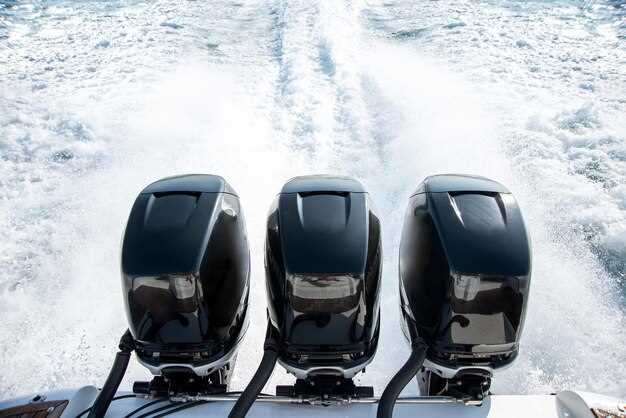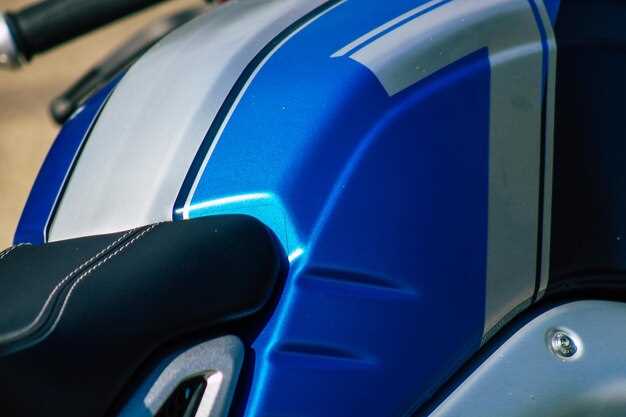
When it comes to marine power, two brands stand out prominently: Yamaha and Honda. Each manufacturer has built a strong reputation in the industry, offering a diverse range of marine engines that cater to various boating needs. Understanding the key differences and similarities between these two brands can help boaters make informed decisions when choosing the right engine for their vessels.
Yamaha marine engines are renowned for their performance and reliability. With a focus on innovative technology, Yamaha offers a variety of outboard and inboard engines that deliver impressive speed and fuel efficiency. Their engines are designed to meet the rigorous demands of both recreational and commercial applications, ensuring that users can enjoy seamless operation on the water.
On the other hand, Honda marine engines emphasize environmental sustainability and fuel economy. Known for their exceptional engineering, Honda engines often feature advanced designs that reduce emissions while maximizing efficiency. This commitment to eco-friendliness positions Honda as a leader in the green boating movement, appealing to environmentally conscious consumers.
In this article, we will delve deeper into the specifications, performance, and user experiences of Yamaha and Honda marine engines, comparing their strengths and weaknesses to help you determine which brand aligns best with your boating requirements.
Fuel Efficiency Analysis of Yamaha vs Honda Outboards

When comparing the fuel efficiency of Yamaha and Honda outboards, it is essential to consider several factors, including engine design, technological innovations, and intended usage. Both Yamaha and Honda have established themselves as leaders in the marine engine market, but their approaches to fuel efficiency differ significantly.
Yamaha outboards are renowned for their high-performance engines that often incorporate advanced technologies such as the Variable Camshaft Timing (VCT) and microcomputer-controlled fuel injection systems. These features allow Yamaha engines to achieve optimal fuel combustion, enhancing efficiency. The typical range of fuel consumption for Yamaha outboards varies depending on the model but can average around 3.4 to 4.5 miles per gallon (mpg), making them a popular choice for recreational and commercial users seeking reliability paired with decent fuel economy.
On the other hand, Honda outboards emphasize quiet operation and environmentally friendly performance, often utilizing four-stroke engine technology that results in lower fuel consumption. Many Honda models demonstrate excellent fuel efficiency, with some averaging 4.0 to 5.0 mpg. Honda’s engineering focuses on reducing emissions while maximizing fuel efficiency, which appeals to environmentally conscious consumers.
In terms of maintenance and longevity, both Yamaha and Honda engines typically provide low operating costs through fuel efficiency. However, the specific consumption rates can vary based on external factors such as boat size, load, and operating conditions. Generally, Yamaha engines provide robust power, which can lead to higher fuel consumption under demanding conditions, while Honda’s focus on efficiency may result in better performance at lower speeds.
Ultimately, the choice between Yamaha and Honda outboards regarding fuel efficiency will depend on individual preferences and specific needs. For those prioritizing power and performance, Yamaha may be the preferred option. Conversely, for users seeking superior fuel economy and environmental sustainability, Honda could be the better fit.
Maintenance Costs and Long-Term Reliability in Marine Engines
When evaluating marine engines, maintenance costs and long-term reliability are critical factors that boat owners must consider. Yamaha and Honda are two leading brands in this sector, each with distinct characteristics influencing their overall performance and upkeep.
Yamaha engines are known for their robust engineering and reliability, which often translates to lower long-term maintenance costs. Their advanced manufacturing techniques contribute to a reduced frequency of repairs and longer intervals between servicing. Many users report that Yamaha engines maintain their performance and efficiency over the years, further minimizing operational expenses.
On the other hand, Honda marine engines also boast impressive reliability and fuel efficiency. However, some users note that the cost of parts may be higher, which can increase overall maintenance expenses. Despite this, Honda’s commitment to innovative technology often results in engines that are easier to service, which can offset some costs associated with repairs and replacements.
Both Yamaha and Honda engines benefit from a strong dealer network, enhancing access to genuine parts and professional service. Regular maintenance is crucial for extending engine life, and both brands incorporate user-friendly features that facilitate routine checks and servicing.
In summary, while Yamaha generally offers lower long-term maintenance costs due to its durability and efficient engineering, Honda provides solid reliability with potential higher parts costs. Ultimately, the choice between Yamaha and Honda will depend on individual priorities regarding budget, performance preferences, and long-term reliability expectations.
Performance Metrics: Acceleration and Speed Comparisons

When evaluating marine engines from Yamaha and Honda, acceleration and speed are critical metrics that highlight their performance capabilities. Both manufacturers offer a range of outboard engines designed for different boating applications, yet their performance characteristics can vary significantly.
Yamaha engines are often praised for their rapid acceleration, particularly in the mid-range RPMs. This allows boats equipped with Yamaha outboards to reach planing speed quickly, which is essential for water sports and fishing. Yamaha’s design focus on lightweight materials and efficient gear ratios contributes to this performance advantage.
On the other hand, Honda engines are known for their smooth acceleration and fuel efficiency. While Honda may not always match Yamaha in top-end speed, they provide a more linear power delivery. This characteristic can be particularly advantageous for cruising and long-distance travel, where maintaining a steady speed is often more critical than achieving maximum velocity.
In terms of top speed, Yamaha frequently edges out Honda, showcasing higher maximum RPMs across various engine models. This performance benchmark is appealing for those seeking adrenaline-fueled experiences or competitive racing on the water.
Furthermore, the difference in acceleration profiles between the two brands means that boaters must consider their specific needs. For activities that demand quick bursts of speed, such as waterskiing or wakeboarding, Yamaha may be the preferable option. Conversely, for leisurely outings and extended voyages, Honda’s emphasis on comfort and fuel efficiency may outweigh the need for high-speed performance.
Ultimately, the choice between Yamaha and Honda engines will depend on individual preferences and intended use. Understanding how each brand performs in terms of acceleration and speed is crucial for making an informed decision that aligns with one’s boating lifestyle.



